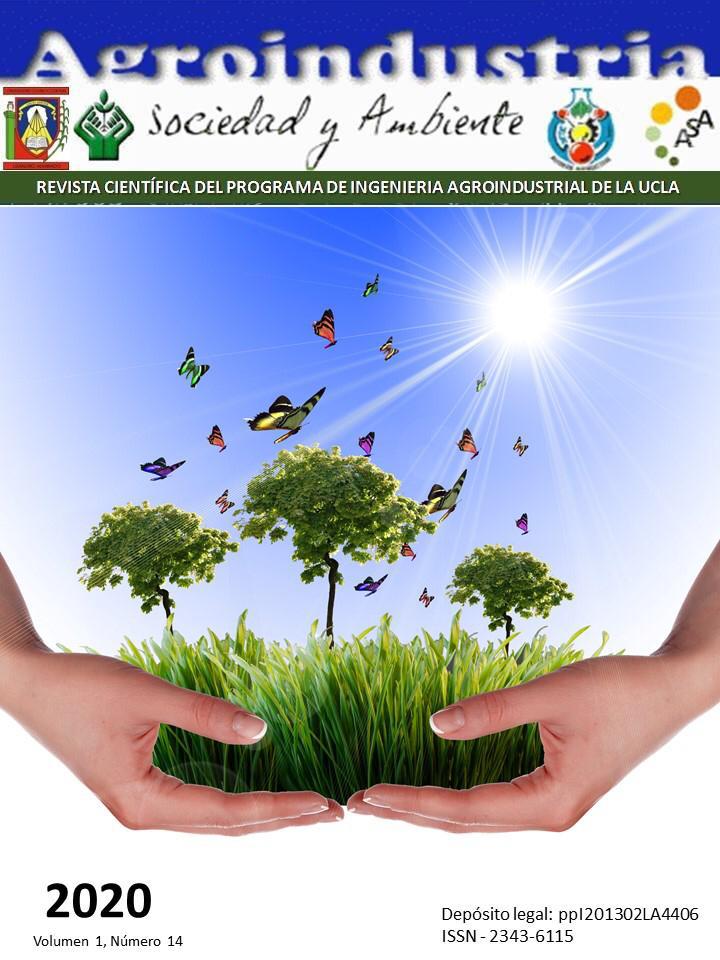Sensory characterization of a ready-to-drink beverage based on coconut water (Cocos nucifera L.)
Keywords:
Cocos nucifera L., ethyl alcohol, drinks, Check all that apply, sensory descriptive analysisAbstract
Alcoholic beverages have a consolidated market, with a shallow category such as the "Ready to drink" beverage that has a low alcohol content. Coconut water is a derivative that represents a niche market, for its pleasant moisturizing and sensory qualities it offers. In this sense, it was proposed to sensorially characterize a RTD beverage based on coconut water (Cocos nucifera L.) applying the CATA methodology ("check all that apply"). Carrying out a market study, to select the most accepted flavoring, a CATA test with 30 descriptors was applied to know the characteristics that can improve the drink. The product was prepared with pasteurized coconut water and clarified with unflavored gelatin, extra neutral ethyl alcohol, sugar, flavoring and preservative. The proportion of sugar and alcohol was varied to obtain four different formulations. Fifty consumers were used to measure the acceptability of the beverage with a 9-points structured hedonic scale and to describe the product and ideal drink by the CATA methodology using 14 sensory descriptors. The acceptability of the product evaluated was 6.04 to 6.76 where the highest value was assigned to the beverage with the highest sugar and alcohol content. The ideal drink was described with coconut water flavor, pineapple flavor, pineapple aroma, sweet, corpulent and acidic. It is possible to prepare pleasant coconut water RTD beverage using a proportion of 10° G.L and 3% sugar.
Downloads
References
Comisión Venezolana de Normas Industriales COVENIN (1979). Norma 1315-79 Alimentos. Determinación del pH (acidez iónica). FONDONORMA. Caracas, Venezuela.
Comisión Venezolana de Normas Industriales COVENIN (1993). Norma 3042-93. Bebidas alcohólicas. Determinación del grado alcohólico. FONDONORMA. Caracas, Venezuela.
Cowden, J; Moore, K; Vanluer, K, 2009. Application of Check-all-that-apply response to indetify and optimize attributes important to consumer’s ideal product. In 8th Pangborn Sensory Science Symposium, 26 – 30 July 2009, Florence, Italy.
De Freitas, R. y Pinto, F. (2000). Agua de coco. Métodos de conservación. Revista Embrapa de Brasil. N° 37.
Euromonitor International (2017). Rtds/High-strength premixes in Venezuela. Disponible: https://www.euromonitor.com/rtds-high-strength-premixes-in-venezuela/report [Consulta: 02 noviembre 2018].
FAO, (2007). Agua de coco Embotellada. Departamento de Agricultura y Protección del Consumidor.
García, J. y González R.; (2015). Evaluación del agua de coco (Cocos nucífera L.) Clarificada como potencial bebida energética. Trabajo de Grado no publicado, Universidad Nacional Experimental Politécnica “Antonio José de Sucre”. Barquisimeto, Lara, Venezuela.
García, J. y Guerrero M. (2003). Cultivo del cocotero. Centro Nacional de Tecnología Nacional y Forestal (CENTA).
Gómez (2010). Desarrollo de una bebida alcohólica tipo coctel (alcopops) para el mercado colombiano. Trabajo de grado publicado. Universidad Nacional de Colombia. Especialización en ciencia y tecnología de alimentos. Bogotá D.C, Colombia.
Lizano, M. (2003). Guía técnica del cultivo de coco. Ministerio de Agricultura y Ganadería (MAG).
Meyners, M., Castura, J. C., & Carr, B. T. (2013). Existing and new approaches for the analysis of CATA data. Food Quality and Preference, 30(2), 309-319.
Umiyauri P y Umiyauri T. 2017. Elaboración de una bebida rehidratante de agua de coco (Cocos nucifera) y Guayaba (Psidium Guajava), evaluación de una pulpeadora vertical. Tesis de pregrado publicada. Universidad Católica de Santa María, escuela profesional de Ingeniería de Industria Alimentaria. Arequipa – Perú.
Varela, P. and Ares, G. (2012). Sensory profiling, the blurred line between sensory and consumer science. A review of novel methods for product characterization. Food Quality and Preference, 48, pp.893-908.
Worch, T., Lê, S., Punter, P. y Pagés, J. (2012). Extension of the consistency of the data obtained with the ideal profile method: Would the ideal products be more liked than the tested products? Food Quality and Preference 26: 74–80.
Zaldivar, E; Molina, D; y Palacios, A. (2018) Aplicaciones del ensayo CATA: influencia de la información contenida en la etiqueta en la percepción del atributo de mineralidad en vinos blancos. Disponible: http://www.acenologia.com/cienciaytecnologia/ensayo_cata_mineralidad_cienc0218.htm [consulta: 28 octubre 2018].
Published
How to Cite
Issue
Section




